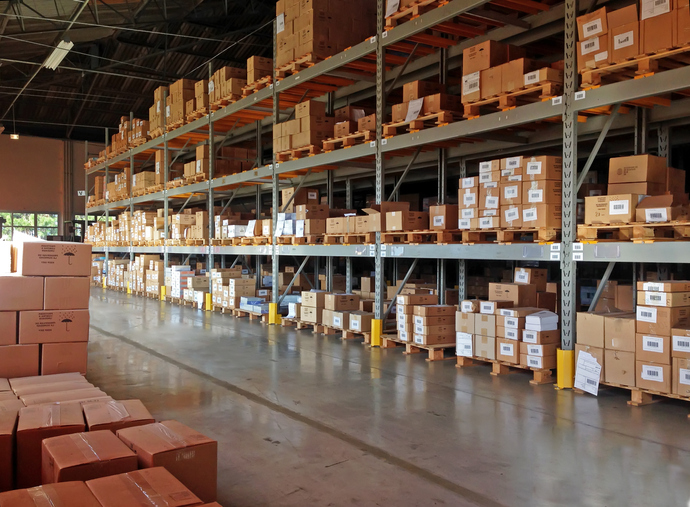More Exemption Requests, More Federal Denials, More Inventory Risk
The tariff battle rages on, and it has never been clearer that manufacturers and distributors need to have a reliable inventory strategy in place to protect themselves now and when the tariffs are resolved. And because that seems far off, companies are doing what they can to stay afloat. During the most recent filing date for tariff exemptions, more than 8,700 requests were submitted by companies claiming they had no alternative options for their production needs.
Yet as the requests for exemptions increased, so too did the denials issued by the Office of the U.S. Trade Representative. In total, nearly 53,000 exemption requests have been filed since the first tranche of tariffs went into effect in mid-2018. In some instances, companies would have been crippled or ruined due to the inability to get certain parts and technology elsewhere. But in others, particularly those where materials parts were available from other sources, the denials were plentiful.
With companies facing more and more uncertainty every day, the need for a scalable inventory strategy must take precedence on companies’ lists of priorities. In reality, such a strategy should have been developed and implemented a year and a half ago. But optimism, indifference, or lack of understanding can easily get in the way of being proactive. In this post, we’ll discuss the impact tariffs have on inventories and what your inventory strategy should be to ensure you’re in the best position possible, both now and when the tariffs are lifted.
Buy Less and More Frequently — Considering All Cost Implications
By now, the impact that the tariffs have had on companies and their inventories is obvious. Supply chains are changing, companies are restructuring their products and services from the inside out to adapt, and consumers are seeing changes and even delays in the products they rely on every day. For many companies, the tariffs have had effects well beyond just cost.
For example, not only are revenue and profit decreasing, but service departments are also struggling. When inventory is low, customers start calling — adding pressure to everyone in the organization to find a solution, though one simply might not exist. This pressure, coupled with any pre-existing operational or supply chain inefficiency, can quickly create a very painful and hard-to-fix bottleneck in an organization’s ability to match consumer expectations.
While progress is being made in the tariff negotiations, the reality is that they’re still very much ongoing. Specific markets and commodities, such as steel and aluminum, may even see tariff increases. Much is still uncertain, but we appear to be at a point where one key inventory strategy is beginning to make more sense despite its potential downsizes: buying less inventory from suppliers, and buying it more frequently.
Why This Inventory Strategy Makes Sense
An initial reaction to this recommended inventory strategy is that it will result in higher costs, and that would likely be accurate. The transactional costs and the per-unit costs incurred would certainly increase to some extent. However, there’s a key benefit in ordering this way — that it prevents your organization from becoming too heavily invested in inventory. If you were to order in significantly higher quantities, you could save on the per-unit price and could also save on total transaction costs over the long-term, but you’d logically have a higher average inventory that might not align with consumer demand.
But what about stock problems? By buying in smaller quantities, even more frequently, won’t that put you at risk of running low on stock — or running out entirely? There is potential for this to happen, but consider that it might be better to be out of inventory temporarily and lose some sales than to be too heavily invested in highly-tariffed inventory with no customer demand.
In the latter scenario, you’ve already spent the money and paid the tariff dues, and now the goods aren’t being purchased for what little margin you have left. You’re in the hole. In the former scenario, you ordered less, paid less on the tariffs, and sold through that stock. While you made less money overall, you’ve spent significantly less overall, too. Even if you have to expedite smaller orders to catch up, this inventory strategy could be worthwhile. Your margins may not be as favorable, due to higher per-unit and transactional costs, but it would minimize the risk of future inventory obsolescence.
Keep Consumer Expectations in Mind
An important consideration with this inventory strategy is consumer demand. Consumers won’t want to pay a higher price as a result of the tariff, so it’s expected that demand will drop during a difficult season such as this, necessitating the inventory strategy we just described. However, if the tariffs were lifted, they would likely expect a price reduction (even though tariff costs weren’t being passed onto them). In this instance, demand could suddenly return to pre-tariff levels, or in some instances, even higher based on a perceived opportunity to save money. And in this situation, your organization might find itself in trouble.
Depending on your industry, what you sell, and who your audience is, your customers may have been experiencing a similar situation to yours. Perhaps you manufacture or sell parts that are just one component of a larger item. If demand for that item has dropped as a result of the tariff, only for the tariff to be lifted and demand return, they might find themselves in a difficult situation had they not maintained a minimum level of inventory. As a result, they would begin pushing on you for your parts — putting you in backlog mode, which creates service problems.
Be Intelligent with Your Inventory Strategy
If you’re considering the inventory strategy we’ve outlined here, it’s worth segmenting your inventory types to avoid becoming overinvested in lower priority items and investing appropriately in higher priority items. Spending too much in order to stock up on lower priority items as a response to the tariffs only puts your organization at greater risk of not being able to move that inventory to offset the initial order cost and tariff impact. This requires analysis to understand the demand for certain items compared to others.
For example, if you have three components that consist of 35%, 25%, and 15% of your orders over a given year (together comprising 75% of all orders), and numerous other products that account for the remaining 25% of your orders, you should do what you can to maintain adequate (not excessive) inventory levels of the first three items. These are the items where you have the greatest opportunity to preserve revenue and margins, keep up with order demand, and maintain a solid position for when the tariffs are lifted, which will be important for competitiveness in a post-tariff landscape.
It All Comes Down to Being Proactive
The tariff negotiations are ongoing, and tariffs on new goods are looming on the horizon. Now is the time to give careful consideration not only to your current supply chain and inventory strategy but also to world affairs. Whatever sources you use for information, monitor them closely and frequently. Be informed so you can make adjustments and plan for the impact of global matters accordingly.
Remember, River Rock Advisors is here to assist you. Our advisory team is comprised of individuals with successful careers in supply chain optimization, operational strategy, business management, inventory performance optimization, and more. We would be happy to talk with you about your inventory challenges and develop a strategy to help you navigate the tariff environment with positive long-term outcomes. Fill out the form below to get in touch with our team.



















